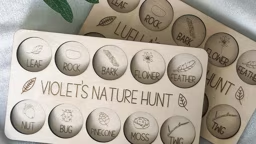
Project courtesy of Garden Gate Magazine
Build with Style
Bird feeders you buy in a store all tend to look alike. Why not build your own? It’s easier than you think. And it won’t look like the feeder in your neighbor’s garden, either.Our exclusive design is a basic tray, which will hold most any kind of seed, with a simple roof and back for weather protection. It’s made from rot-resistant cedar and a piece of 8-inch-diameter duct tube — the same stuff that carries your forced air heat from the furnace to your rooms. You can find it at most home improvement or hardware stores. And if you ask, the store may cut the duct to length, too. If not, cut it with a pair of tin snips. Be sure to wear gloves — the metal edges are very sharp. To open the tube, gently squeeze the sides together and it will release at the crimped seam.
Easy mounting
Mount this feeder onto a section of ½-inch galvanized pipe set in the ground. You’ll install a pipe flange on the bottom of the tray so you can screw the feeder onto the pipe.Pick a location
Because of the large landing area, this feeder is popular with a wide variety of birds, like this chickadee, and squirrels. If you want to keep squirrels out, site your feeder at least 6 to 8 feet from any spot they can jump from, such as overhanging trees or the roof, and 5 to 6 feet high, since they can jump vertically, too. A squirrel baffle, either a tube or a disc, helps. Fasten it onto the pole below the feeder, but keep it wobbly so the squirrels can’t climb around it.Gather your tools and head out to the store to pick up materials. Your feathered friends will be soon be flocking in for a treat.
Materials & Tools
- 1 8-ft. length of 1×6 cedar
- 1 8-ft. length galvanized round duct cut to 1 ft.
- ½-in. galvanized pipe flange with screws
- #4 galvanized nails
- 8-10 small sheet metal screws
- Tin snips; hammer; table saw; jig saw; screwdriver; tape measure; cutting template; drill; 1-in. spade bit; awl and wood rasp
Cutting Diagrams
Make the tray
Using the diagram shown below, cut the tray’s floor first. Notice that you trim the corners so the tray won’t fill with melted snow or rain water. Then rip a length of the cedar down to width for the two sides and ends. Cut them to length and nail them to the tray floor so the bottom is flush. Use a wood rasp to file down the front and back bottom edges of the tray so the duct will fit smooth and snug. (You don’t have to do this, but it does add a smoother fit when you slide the duct in place). Turn the tray upside down and screw the pipe flange on exactly in the center as shown in the diagram.Cut the ends
Using the cutting diagram below right, cut the two upright pieces with a jigsaw. Center each one on an end of the tray, nailing them on so they extend ½ in. below the edge.Make the roof
If the store didn’t cut the tube down to 1 ft., wrap a sheet of newspaper around the duct and tape it in place. That will give you a straight edge to follow as you cut with a pair of tin snips.Next, make a hole in the bottom of the duct for the pipe. Slip the duct onto the tray, leaving a 1⁄2-in. lip on the bottom front. Mark the spot on the duct that lines up with the pipe flange — you’ll just have to “eyeball” it. Remove the duct and lay a piece of scrap lumber under the spot where you’ll be drilling. Use a 1-in. spade bit to make the hole into the duct.
Finish it up
Slide the duct back onto the tray and line up the hole to the flange. Fasten the duct to the wood on the top and bottom with sheet metal screws (you may need an awl to punch holes in the metal first) and you’re finished, ready to screw the feeder onto the pipe.
See also Your Seasonal Garden Checklist










